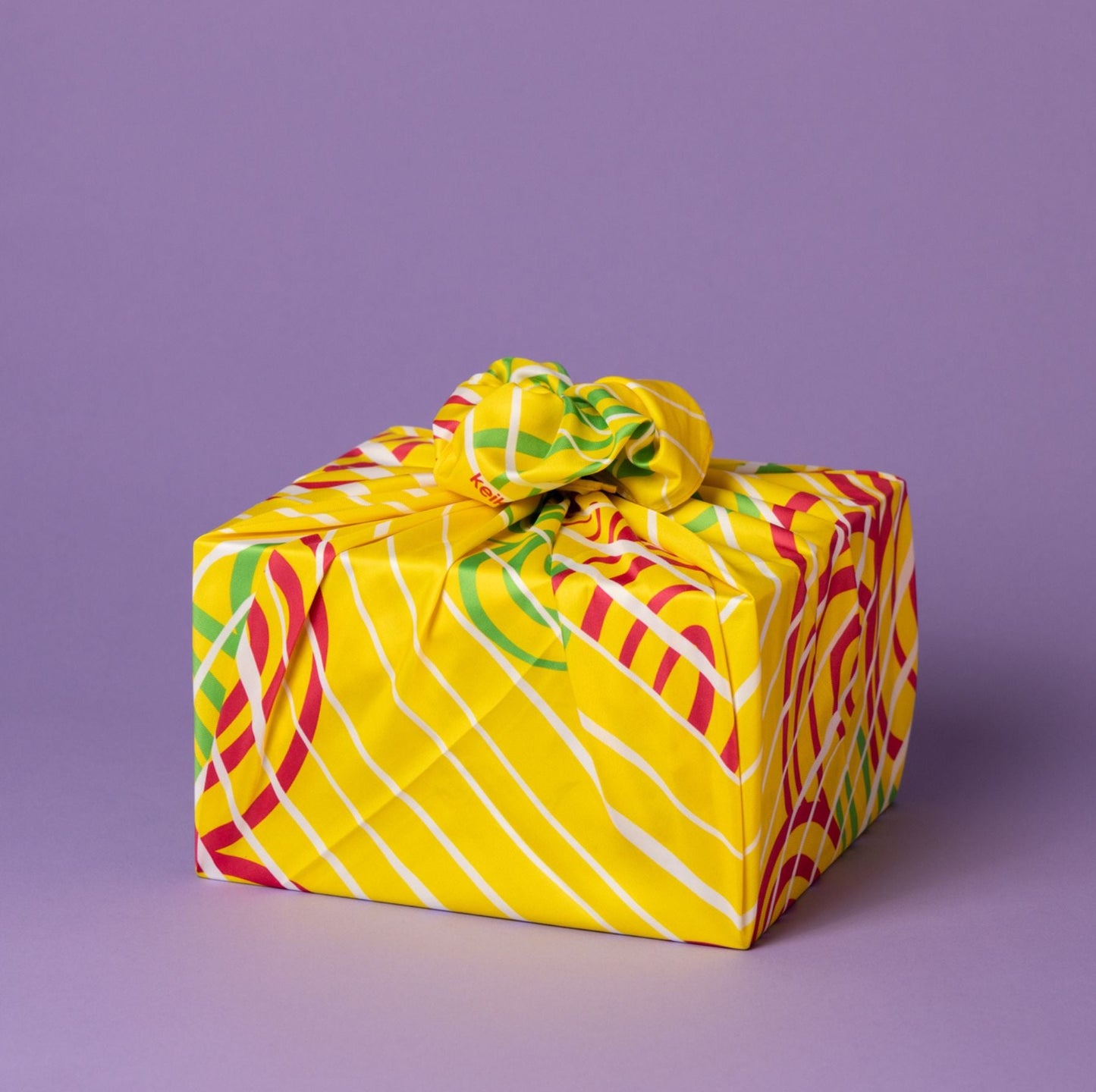
The Historical Origins and Evolution of Furoshiki Wrapping
In a world captivated by modern trends, some traditions manage to transcend time, weaving their way through history while leaving an indelible mark. One such enchanting tradition is Furoshiki wrapping – a delightful and versatile Japanese art that has not only stood the test of time but has also spread its vibrant embrace worldwide. Today, let's take a journey through its origin, evolution, and its heartwarming impact on cultures far and wide.

Source: zusetsu.com "Picture Book of Kyouka Poems: Mountains Upon Mountains (1804)".
Origins of Furoshiki Wrapping
Picture ancient Japan, a land rich in cultural tapestry, where resourcefulness and artistry intertwined. It's here that the seeds of Furoshiki wrapping were sown. The term "Furoshiki" translates to "bath spread," reflecting its original use – wrapping and transporting clothes while taking a communal bath at public bathhouses. These cloths evolved from functional necessity to exquisite design as craftsmen began embellishing them with intricate patterns, transforming them into more than just practical items.
Elegance Unfolds: Furoshiki's Evolution
As time unfurled its chapters, Furoshiki underwent a transformation. No longer confined to utilitarian purposes, these cloths transcended their humble beginnings. They became a canvas for creativity, reflecting Japan's penchant for combining aesthetics with functionality. The art of Furoshiki wrapping began gracing everything from gifts and food to books and daily essentials.Cultural Threads Unite
The allure of Furoshiki transcended borders, and its influence rippled across continents. Embraced by people from all walks of life, it seamlessly integrated into various cultures, each adding its own unique twist. From Japan's intricate Shibori tie-dye techniques to India's vibrant textiles, the world absorbed Furoshiki wrapping, adapting it to local customs while keeping its essence alive.
Sustainability: A Modern Revival
In an era defined by sustainability, Furoshiki wrapping rekindled its prominence. As environmental concerns grew, this art form found new purpose as an eco-friendly alternative to disposable wrapping paper. People began appreciating the value of a gift that keeps on giving, with the fabric itself becoming part of the present. The circular nature of Furoshiki aligns beautifully with the "reduce, reuse, recycle" mantra, contributing to a greener world.Furoshiki Today: A Tapestry of Possibilities
In today's fast-paced world, Furoshiki wrapping has evolved into a canvas for self-expression. With a myriad of fabrics, patterns, and folding techniques, each wrap tells a unique story. From birthdays to weddings, Furoshiki celebrates life's moments with an artful embrace, adding a personal touch that leaves recipients in awe.The Joy of Learning: Furoshiki's Legacy
Furoshiki is more than just a wrapping technique; it's a legacy to be shared. Communities, families, and individuals around the world are discovering the joy of learning this art form. Workshops, online tutorials, and social media platforms offer avenues to immerse oneself in the beauty of Furoshiki, encouraging us to slow down, connect with tradition, and cultivate a deeper appreciation for the art of giving.In essence, the journey of Furoshiki wrapping is a vibrant tapestry woven with threads of creativity, tradition, and global unity. From its beginnings as a bathhouse necessity to its current status as an eco-conscious art form, Furoshiki's evolution is a testament to its timeless appeal. As we wrap gifts in Furoshiki, we're not just adorning presents; we're carrying forward a cultural treasure that continues to bridge cultures, celebrate life's moments, and embrace sustainability. So, the next time you reach for a Furoshiki cloth, remember that you're not just wrapping a gift – you're weaving a story that transcends time and connects hearts across the world.























